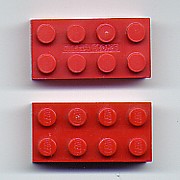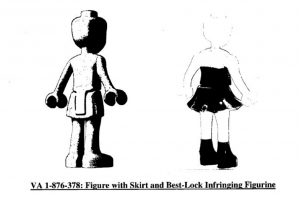A post from our student blogger Roberto
As a kid, I could usually be found playing ball in the yard with my brother until the sun went down. When we were forced to be inside, either by the lack of sunlight or good weather, my brother and I would always find something fun to do. Many times I would find myself with screwdriver and hammer in hand, plotting how to take something apart in order to figure out how it worked. As you may be able to guess, this led to the absolute destruction of many valuable items, including a watch which was my mother’s wedding gift to my father. Shockingly, my parents were in desperate need of a new way for me to get my early engineering fix and began investing in Legos. Like any aspiring engineer, I spent days on end constructing the coolest hydrogen-powered intergalactic star destroyers and subterranean exploratory vehicles. Pretty soon I was bringing my creations to family gatherings showing them off like blue ribbon cattle at the state fair. Before long my amazing family contributed to the cause by routinely giving me Legos on birthdays and at Christmases. I remember one year getting a set of Mega Bloks and initially not even realizing the difference. For those who do not know, Mega Bloks are a direct competitor to Lego’s interlocking brick platform and often times can even be used interchangeably with Legos. After using these new Mega Bloks with my old Legos I soon realized the truth; the Mega Bloks were simply not as nice as the Legos I had come to know and love. These Mega Bloks looked and worked like Legos but were not made to the same quality. Rather than precisely locking together like Legos, Mega Bloks were flimsy and never really fit well together often leading to weak structures that fell apart. In contrast, my Lego creations were so rigid that they needed to be pried apart and often doubled as formidable defense measures against an unexpected onslaught by my brother.
So why am I spending all this time talking about Legos? Well, while reminiscing about my childhood over our recent spring break I remembered my love for the little plastic blocks. After I thought about them for a while I asked myself two things. First, where the heck were they, I needed to find them and relive all these awesome memories. And second, I wondered what kind of crazy intellectual property issues Legos ran into. After doing some research I found out that the Danish company started selling toys in 1932 and introduced the first of their famous bricks in 1958. As you may be able to guess, many of Lego’s patents have since expired with the last major one expiring in 1978.
Mega Bloks first entered direct competition with Legos in 1991 and has been involved in about a dozen lawsuits with Lego since then, many of which are still active. The natural question now is, how did Mega Bloks’ activity after Lego’s patent expirations result in a lawsuit? Well, after running out of patent protection Lego’s savvy legal team turned to copyright and trademark protection. In particular, Lego has tried to protect the visual appearance of its standard brick with eight studs through trademark protection. In 2005, Lego sued Mega Bloks for trademark violation in Canada and lost and after that, Lego brought a similar suit against Mega Bloks in Europe and lost again. As it stands right now, Lego is currently grasping at straws to protect its intellectual property and facing the possibility of little real protection.
While many of the cases surrounding Lego’s trademark of a block with studs have been settled Lego is now going after competitors for making products similar to their new “Lego Friends” products. Lego has recently filed a complaint to the U.S. International Trade Commission (ITC) against several companies to bar importation of several products similar to their “Lego Friends” products on the basis of copyright infringement. The ITC’s intellectual property powers originate from their responsibility to protect domestic industries from “unfair competition”. The key issue here is that Lego is a Danish company which manufactures its products in Europe and Mexico. This may disqualify them from standing as a “domestic industry” and therefore they may not subject to the ITC’s protection.
What presents an even more interesting situation for Lego is the advent of 3D-printing technology. As you may know, 3D-printers are becoming less expensive and are beginning to offer more capabilities. In the coming years as 3D-printers become common place it will be impossible for Lego to prevent others from printing their own bricks. In fact, a professor at Carnegie Mellon University recently created an online library of pieces which can be printed by anyone with a 3D-printer. It is not out of the realm of possibility that 3D printers will dramatically impact sales of products like Legos which are largely uniform and easy to print. As the cost of 3D-printers and supplies continue to decrease, at what point will Legos become simply too costly? These issues are surely being considered by the company and it will be exciting to see how they adapt. Before long Legos may no longer be bought at the store, but downloaded online and printed at your desk.

